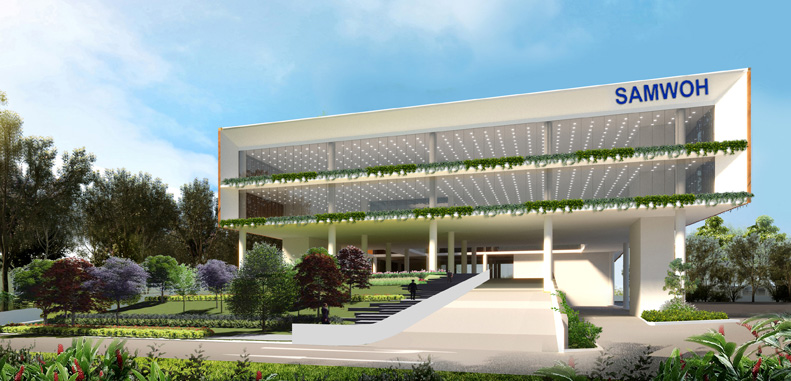Image Credit: Madeni Jais
31 August 2021
As the construction industry amps up zero-carbon initiatives, firms should pursue the goal with enthusiasm. It’s for our own good, says pResence editor Ong Junlin
- “Net zero carbon” will be the construction industry’s foremost goal these few decades.
- Singapore is vulnerable to climate change, and government-led initiatives are expected to come thick and fast.
- As architects, we can contribute by designing buildings that protect the climate and humanity.
Footage of melting glaciers; news of heatwaves, wildfires and extreme flooding – these no longer surprise us when we tune into the news. Earlier this month, the UN’s chief even warned that a new global climate change report spelled “code red” for humanity.
It’s no secret that construction is one of the main culprits of global warming. It’s responsible for some 40% of the world’s carbon emissions, according to the World Green Building Council, whose goal is for total sector decarbonisation by 2050. This decade, and several to come, will likely see the “net zero carbon” as the industry’s foremost goal.
Green plans
As a tiny island, Singapore is well aware of its vulnerability to climate change, and government-led initiatives are expected to come thick and fast.
This year, new targets for the Singapore Green Plan 2030 include best-in-class green buildings by 2030, with 80% of new buildings to be super low energy. Last year, the government announced S$49 million in funding to accelerate projects in hydrogen and carbon capture, utilisation and storage to slash emissions.
Meanwhile, the Building and Construction Authority is funding the use of mass engineered timber and awarding it more points in design appraisals and Green Mark scoring. Speaking of Green Mark, this year’s newly-piloted framework – which was revised to focus on energy and carbon indicators for climate change – has a dedicated section on carbon, including embodied carbon and green leases for commercial projects.

Image Credit: Samwoh Corporation Pte Ltd
Reduce & reuse
Over 60 organisations – including RSP – have signed the Singapore Built Environment Embodied Carbon Pledge to minimise material use, choose materials with lower embodied carbon, and use less energy in construction.
These goals are achievable: Samwoh Smart Hub, the Republic’s first “positive energy” industrial building, produces more energy than it uses. Designed by our sister firm AC Consortium, the 5-storey project was constructed entirely with recycled concrete aggregates, equipped with state-of-the art innovation, and benefits from strategic building orientation and the insertion of courtyard spaces.
As for RSP, our portfolio of rejuvenation projects are the result of an emphasis on embodied energy, the total energy involved in a material lifecycle across production, maintenance and demolition. Rejuvenation reuses building materials rather than rebuilding. Examples include Great World City, Shaw Plaza and Coastal PlayGrove at East Coast Park.
For our good
In his comments on the “code red” study, UN Secretary General Antonio Guterres said that the world can avert a climate catastrophe, but there is “no time for delay and no room for excuses”.
As architects and designers, we can do our part in myriad ways, creating opportunities to introduce naturally ventilated spaces, sun-shading devices and screens to cut down the heat radiation, and employing passive design strategies like building orientation to reduce the carbon impact of our buildings. Mechanical and electrical systems interventions are also likely to play a big role.
As we move toward net-zero carbon goals, we should be enthusiastic about designing buildings that not only benefit users, but also the Earth, and by extension, humanity. After all, it’s for our own good.

Ong Junlin, Editor of pResence
Senior Associate, Singapore Studio
The relationship between the built environment and our natural environment is inherently conflicting. The mass production of cement, a conventional raw building material, releases substantial amount of carbon dioxide into the atmosphere, which does not benefit the natural environment. As much as we strive to answer to humanly needs of having shelters over our heads, it is critical that we maintain harmony between the built environment and our natural one.
Share




